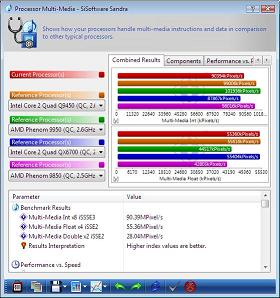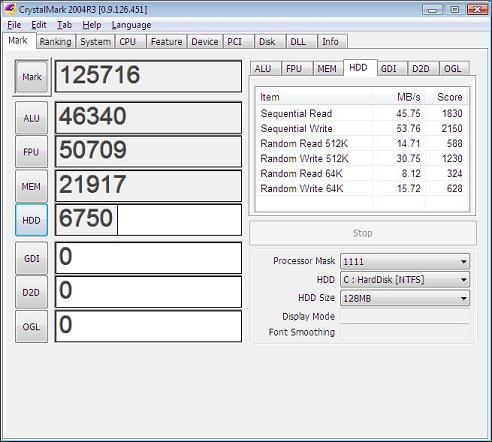|
Installation:
Installation of the GA-EP45T-Extremee was very straight forward. Standard tools were all that was required and we ran into no issues during the installation. This is more a credit due to the case than the motherboard which in our scenario was the Cooler Master Cosmos which provides much more than enough room to allow for an easy setup. Everything we needed for the installation was included in the box and the instructions were clear and concise.
Test Setup:
| CPU | Intel Core 2 Quad Q6700 |
| Motherboard | Gigabyte GA-EP45T-Extreme |
| RAM | PQI 4GB PC3-1600 DDR3 |
| Hard Drive | Western Digital 74GB Raptor |
| Operating System | Windows Vista Ultimate |
| Heatsink | Thermalright Ultima 90 |
| Computer Chassis | Cooler Master Cosmos |
| Video Card | Palit 4870 X2 |
This is a fairly high-end setup without costing a fortune. The most expensive component in this setup would be the Sapphire 4870 X2 which rounds out this gaming machine and adds the power to plow through the most damanding of games as a single card solution. We will talk a bit about comparitive setups and their costs down below.
Performance and Overclocking:
We tested the GA-EP45T-Extreme using the following software:
- CrystalMark 2003 R4
- Sisoft Sandra Lite
- CPUZ
- 3DMark Vantage
Overclocking the EP45T-Extreme is accomplished through tuning settings in the bios. The great thing about the EP45T-Extreme is the level of control afforded via the bios. You have the ability to vary nearly all of the settings in order to attain the ultimate stable overclock. The primary adjustable settings include:
| Front Side Bus | 100 - 1200MHz |
| PCIe | 90MHz to 150MHz |
| CPU Multiplier | 6x - 16x |
| CPU Voltage | 0.5V to 2.3V |
| Memory (RAM) Voltage | 1.5V to 2.5V |
| ICH Voltage | 1.0V to 2.3V |
| MCH Voltage | 0.8V - 1.8V |
We were able to attain a stable overclock of 4.42GHz with a bus speed of 442 and a multiplier of 10x. Anything higher resulted in the inability of the system to maintain a stable windows environment.
CPUZ
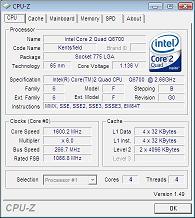 |
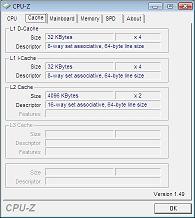 |
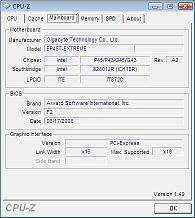 |
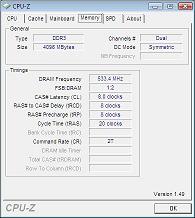 |
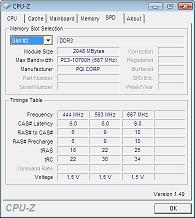 |
Click on the Thumbnail Images for a Larger View
Sisoft Sandra:
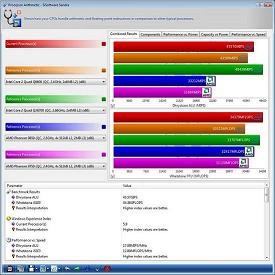 |
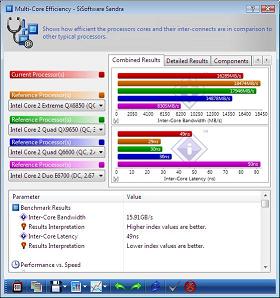 |
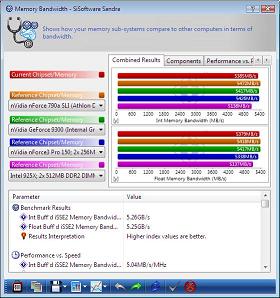 |
 |
Click on the Thumbnail Images for a Larger View
CrystalMark 2003R3
Note: We did not include the GDI, D2D, or OGL tests as these are much more indicative of graphics performance than system performance.
3DMark Vantage:
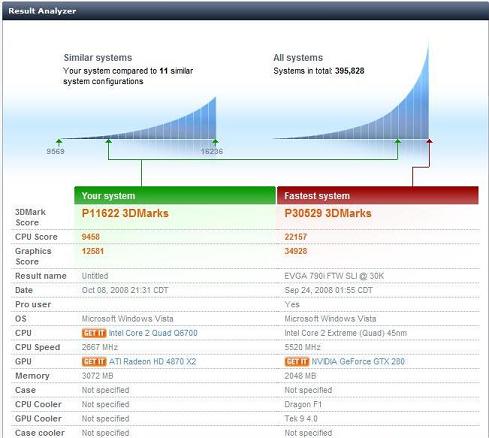
Note: We included the Vantage test results not only for overall system and graphics performance but also to provide system comparison for cost and performance.





